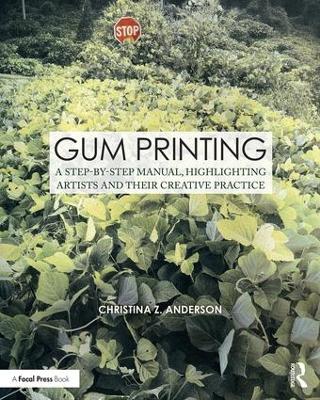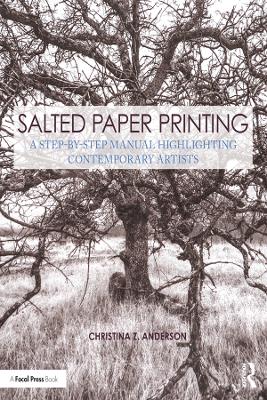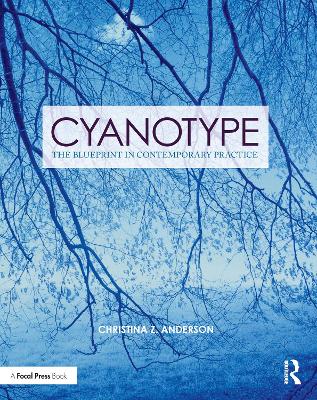Contemporary Practices in Alternative Process Photography
4 total works
Gum Printing: A Step-by-Step Manual Highlighting Artists and Their Creative Practice is a two-part book on gum bichromate written by the medium’s leading expert, Christina Z. Anderson. Section One provides a step-by-step description of the gum printing process. From setting up the "dimroom" (no darkroom required!) to evaluating finished prints, it walks the reader through everything that is needed to establish a firm gum practice with the simplest of setups at home. Section Two showcases contemporary artists’ works, illustrating the myriad ways gum is conceptualized and practiced today. The works in these pages range from monochrome to colorful and from subtle to bold, representing a variety of genres, including still lifes, portraits, nudes, landscapes, urbanscapes and more. Featuring over 80 artists and 400 full-color images, Gum Printing is the most complete overview of this dynamic and expressive medium that has yet appeared in print.
Key topics covered include:
- The history of gum
- Simple digital negatives for gum, platinum, and cyanotype
- Preparing supplies
- Making monochrome, duotone, tricolor, and quadcolor gum prints
- Printing gum over cyanotype
- Printing gum over platinum
- Troubleshooting gum
- Advice on developing a creative practice
Salted Paper Printing: A Step-by-Step Manual Highlighting Contemporary Artists makes one of the oldest known photographic processes easy for the 21st century using simple digital negative methods.
Christina Z. Anderson’s in-depth discussion begins with a history of salted paper printing, then covers the salted paper process from beginner to intermediate level, with step-by-step instructions and an illustrated troubleshooting guide. Including cameraless imagery, hand-coloring, salt in combination with gum, and printing on fabric, Salted Paper Printing contextualizes the practice within the varied alternative processes. Anderson offers richly-illustrated profiles of contemporary artists making salted paper prints, discussing their creative process and methods.
Salted Paper Printing is perfect for the seasoned photographer looking to dip their toe into alternative processes, or for the photography student eager to engage with photography’s rich history.
Cyanotype: The Blueprint in Contemporary Practice is a two part book on the much admired blue print process. Part One is a comprehensive how-to on the cyanotype process for both beginner and advanced practitioners, with lots of photographs and clear, step-by-step directions and formulas. Part Two highlights contemporary artists who are using cyanotype, making work that ranges from the photographic to the abstract, from the traditional to the conceptual, with tips on their personal cyanotype methods alongside their work. These artists illustrate cyanotype’s widespread use in contemporary photography today, probably the most of any alternative process.
Book features include:
- A brief discussion of the practice of the process with some key historical points
- How to set up the cyanotype ÒdimroomÓ
- The most extensive discussion of suitable papers to date, with data from 100+ papers
- Step-by-step digital negative methods for monochrome and duotone negatives
- Chapters on classic, new, and other cyanotype formulas
- Toning to create colors from yellow to brown to violet
- Printing cyanotype over palladium, for those who want to temper cyanotype’s blue nature
- Printing cyanotype on alternate surfaces such as fabric, glass, and wood
- More creative practice ideas for cyanotype such as handcoloring and gold leafing
- Troubleshooting cyanotype, photographically illustrated
- Finishing, framing, and storing cyanotype
- Contemporary artists’ advice, techniques, and works
Cyanotype is backed with research from 120 books, journals, and magazine articles from 1843 to the present day. It is richly illustrated with 400 photographs from close to 80 artists from 14 countries. It is a guide for the practitioner, from novice to expert, providing inspiration and proof of cyanotype’s original and increasing place in historical and contemporary photography.
Digital Negatives with QuadToneRIP is a text that fully explores how the QuadToneRIP printer driver can be used to make expert digital negatives. The book takes a comprehensive, Òunder-the-hoodÓ look at how Roy Harrington’s QTR printer driver can be adapted for use by artists in several different creative practice areas. The text is written from the Mac/Photoshop point of view.
The book is divided into three parts. Part One is a step-by-step how-to section that will appeal to both beginning and more advanced practitioners. Part One includes quickstart guides or summary sheets for beginning students who want to jump into using QTR before understanding all of its functional components. Part Two addresses dimroom, darkroom, and printmaking practices, walking the reader through brief workflows from negative to print for lithium palladium, gum bichromate, cyanotype, salted paper, kallitype, silver gelatin and polymer photogravure, with a sample profile for each. It also includes an introduction to a new software iteration of QTR: QuickCurve-DN (QCDN). Part Three is devoted to contemporary practitioners who explain how they use QTR in their creative practice.
The book includes:
- A list of supplies and software needed
- A summary QTR glossary with a simple explanation of how each function works
- A sample walk-through to create a QTR profile from start to finish
- How to linearize profiles with simple to more exacting tools
- A visual guide to modifying functions
- Quickstart guides for many of the workflows
- Instructions for crafting monochrome, duotone, tricolor, and quadcolor negatives
- Instructions for using QTR to print silver gelatin in the darkroom
- Instructions for using QTR to print alternative processes in the dimroom
- Instructions for using QTR to print polymer photogravure in the printmaking room
- Introductory chapter to QuickCurve-DN software
- Troubleshooting common QTR problems
- Generic starter profiles for processes discussed
- Contemporary artists: their work and QTR process.
Learning how to craft expert digital negatives can be a bit overwhelming at the outset. Digital Negatives with QuadToneRIP makes the process as user-friendly as possible. Like other books in the series, Digital Negatives with QuadToneRIP is thoroughly comprehensive, accessible to different levels of learner, and illustrative of the contemporary arts.



